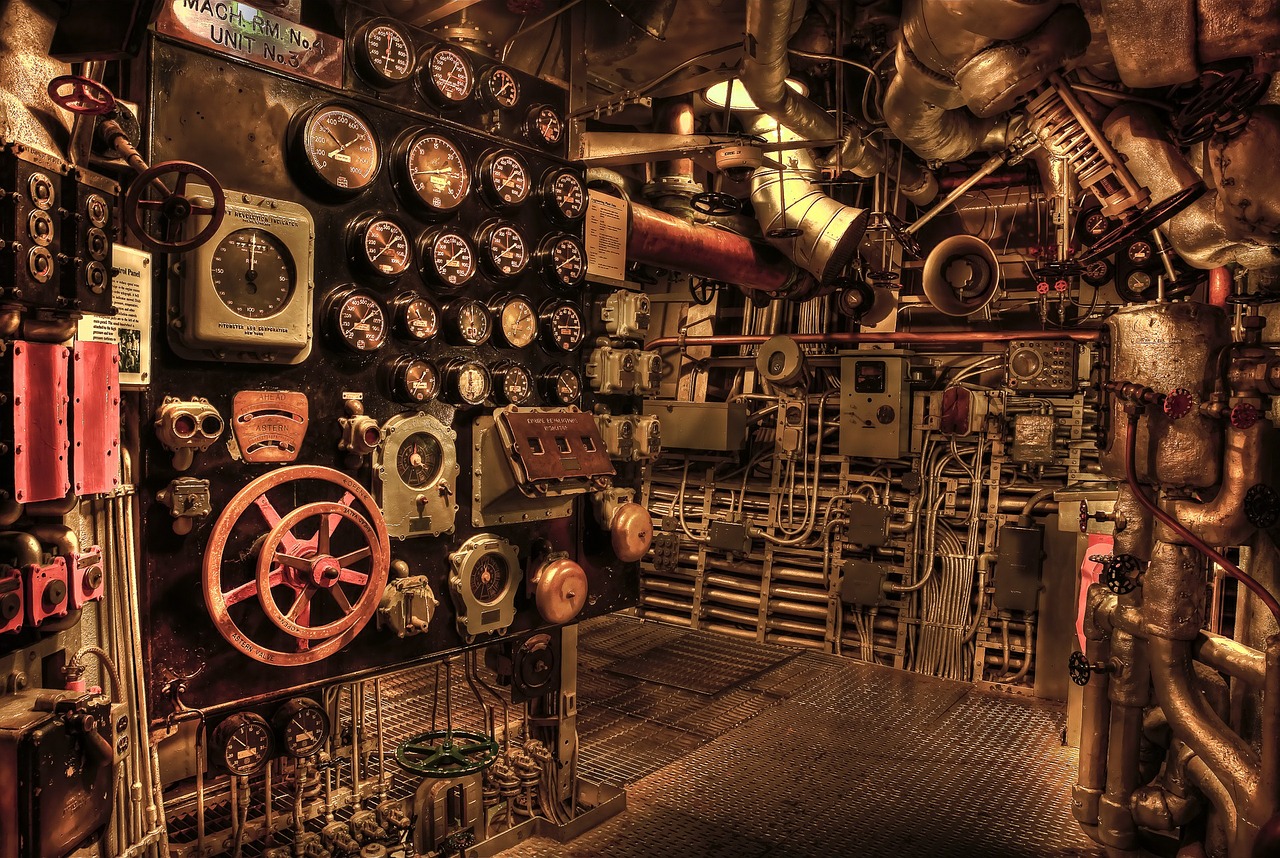Dialed In For Life: The Fine-Tuning Argument
Since humans first started walking the earth, we have looked to the heavens and the environment around us and came to the realization that there are forces at play larger than us. Initially, some people groups attributed every single thing to a separate deity. But, over time, people concluded that the apparent order to the universe must be attributed to a single entity and not a dysfunctional family of gods and goddesses.
In his 12 volume work labeled Laws, Plato (423 B.C. – 347 B.C.) came to the conclusion that, based on the observable order behind the movement of the objects in the sky, there must be a singular intelligence behind all of it (Laws 12.966e). Years later, Aristotle (who was one of Plato’s students) would argue that there must be a First Uncaused Cause to everything (Metaphysics). Keep in mind that these men lived almost 400 years before a single line of the New Testament was written.
As science has developed, we have come to understand more about the movement of the sun – that it’s no the wheel of some great chariot, that we actually rotate around it, and that we don’t sit in our place on space because we rest on the shoulders of some diety. So, the question becomesdid all of the forces of nature act upon one another randomly to develop a life-permitting universe? Or was there some intelligent force behind it that set things in motion with intention?
More Than Meets The Eye
Science is primarily the act of observing something and coming to a conclusion based on the results of your observations. As various instruments have been developed, we have been able to increase our accuracy to incredible levels – zooming in to the building blocks of life or zooming out billions of light-years into the universe.
As we dig deeper and deeper, layer after layer of forces, mechanisms, and constants are revealed as well as the complexity in which they interact. As time goes on, we begin to see the delicate and complex balance required of the universe in order to permit life.
Just so we have a definition to work with when I refer to “life” I mean the ability of organisms to take in food, use it as an energy source, grow, change as their environment changes, and reproduce. That could be as complex as a human life form or as simple as a single-celled organism.
The Dials On The Machine: Evidence Of Fine-Tuning
As we begin to discuss some of the constants and forces required for a life-permitting universe, I think it would be helpful to picture each one of these as a dial on a wall. This dial controls the value of a given constant or force or law of nature. Picture several lines around the dial – each line representing a possible value that the constant could be set to.
Universal Dials
Let’s begin looking at some of the dials in the control room. We’ll start with the ones that control the universe at large and then zoom down tighter and tighter until we get to the dials regarding our planet.
The first set of dials have to do with the forces that hold everything together – the strong nuclear force, weak nuclear force, electromagnetic force, and the force of gravity. The constants of these forces have to be set within very narrow ranges or no life would exist in the universe. The number of protons to electrons must be so precise that any change to this ratio more than 1 in 1037 (that means a 10 with 37 zeros after it) means that the universe as we know it would not exist. To think of it in terms of our dial analogy, that’s a dial with 1037 hash marks on it. One tick to the left or the right of the current ratio and… We can say the same thing about the ratio between the electromagnetic force and gravity. That dial has 1040 hash marks on it. If it were off one hash in either direction, the universe would also not exist as we know it. The universe could have existed if these values were altered slightly, but it would look vastly different, and life would not exist.
Previously, we discussed the evidence that shows us the universe is expanding. If that rate of expansion increased or decreased by 1 in 1037 we wouldn’t have a single galaxy or planet suitable for life. Think about that. Think about the speedometer in your car. Think about how hard it is to keep the speed locked at a constant number as you are driving. Most speedometers have between 20-30 hash marks so you can “eyeball” how fast you are going. Imagine if it had 1037 hash marks on it, and if you varied your speed one line in either direction, the universe would blow apart or collapse in on itself.
Favorable Conditions
The more and more we learn about the universe, the more and more we can see just how the odds of life were stacked against us. There are many factors that come into play that make the conditions for life to exist on Earth just right. For example, the Milky Way galaxy is shaped like a spiral while 95 percent of the other galaxies are irregular or elliptical. This matters because it influences the amount of radiation and metals present which are the building blocks of life.
The distance the Milky Way is from other galaxies is important because of the gravitational pull other galaxies would have on us. The size of the Milky Way is important because if it were smaller, the gravitational pull between bodies within it would be destructive. And, if it were bigger, stars would be less likely to form.
Where we are in the Milky Way galaxy is favorable to life. If we were closer to the core, then the radiation and gravitational pull would be too great for life to form. Any further out and we would not get enough heavy elements to create the type of planets life can exist on.
Regional Dials
The previous conditions were all on a universal and galactic scale. Now, let’s look at some things within our own solar system that are favorable to life.
There are a number of factors involving our sun that make life possible for us. What the sun is made of, the color of the sun, the level of brightness, the level of warmth, its age, size – the fact that there is only one sun – all play critical roles in ensuring that life-sustaining planets can exist. Change any of these levels slightly and planets don’t form in our solar system, plants can’t grow, and most certainly carbon-based life can’t exist.
The position of other planets in our solar system is also favorable to life. For example, because of the size of Jupiter, it attracts a lot of debris flying through space and keeps it from affecting us here on Earth.
Local Dials
Now, let’s have a look at some of the conditions that make Earth favorable to life. Firstly, let’s think about our relationship to the sun. Our relationship to the sun has a tremendous effect on our climate. Any change in the distance of our orbit from the sun, the tilt of our axis, or the speed as which we move and life becomes vastly more difficult – even impossible.
Just like Jupiter and the sun, the Earth’s gravitational pull is set at the perfect level to allow for life on Earth. If Earth’s gravity were stronger, it would contain too much methane and ammonia. If it were weaker, our planet couldn’t keep enough water. The ratios of oxygen, nitrogen, carbon dioxide and water vapor are finely tweaked to allow for advanced life, promote photosynthesis, and provide adequate rainfall.
The Earth’s relationship to its moon makes life possible. The size and position of the moon affect its gravitational force on the earth. These factors keep the earth tilted at a stable 23.5 degrees. This tilt affects the climate on the earth and keeps it mild enough to allow for not only intelligent life, but the other ecosystems we depend on.
The thickness of Earth’s crust is conducive to life on the planet. Any thicker and too much oxygen would be transferred to the crust. Any thinner and the volcanoes and earthquakes would be too much to make life possible.
What Is Fine-Tuning?
Previously, I asked you to think of each constant or law as an individual dial – each with a very narrow range of possible values. Now, take a few steps back and realize that the wall has numerous dials and switches on it. (Exactly how many dials constants, laws conditions, etc there are that make up fine-tuning depends greatly on which cosmic model you subscribe to. I’ve read of anywhere from 30 to 122 different factors. Here’s a small list of other “dials” we should consider being on our control room wall). Now, as narrow as the values have to be individually to permit life, the probability of them all being set just so has to be even narrower in order to permit life. This extremely narrow probability is what we mean when we say the universe is fine-tuned.
A popular example of the precision of this probability involves firing a bullet towards the other side of the observable universe, 20 billion light-years away, and hitting a one-inch bullseye on a target. The chances of that happening are 1 in 1060!
How Did The Dials Get Set?
That the universe is fine-tuned for life is widely agreed upon in the scientific community. The question of why is one left up to much debate. Did the constants and quantities have to have the values they do? Is the universe we live in just a big cosmic accident? Or was the universe designed by a Designer to be life-permitting? These are all possibilities we will consider in the next article.
Share This Story, Choose Your Platform!
latest video
news via inbox
Nulla turp dis cursus. Integer liberos euismod pretium faucibua







